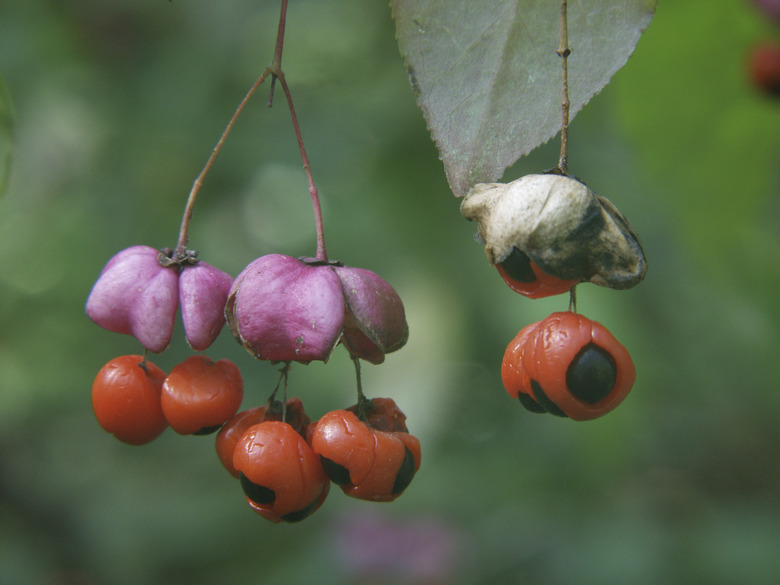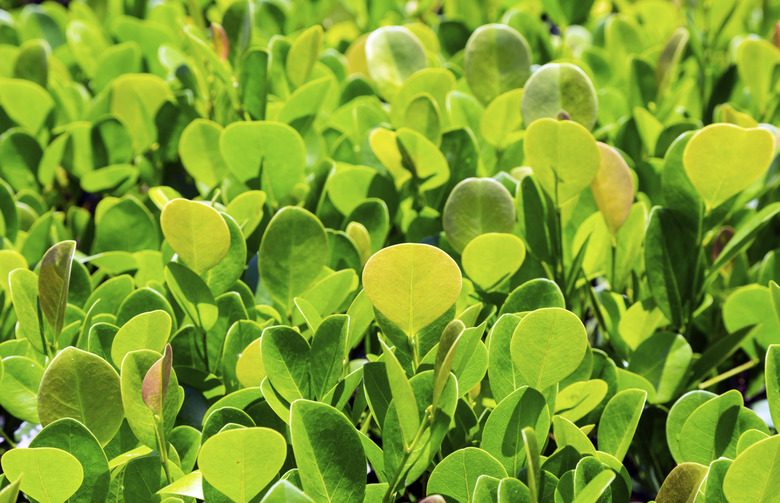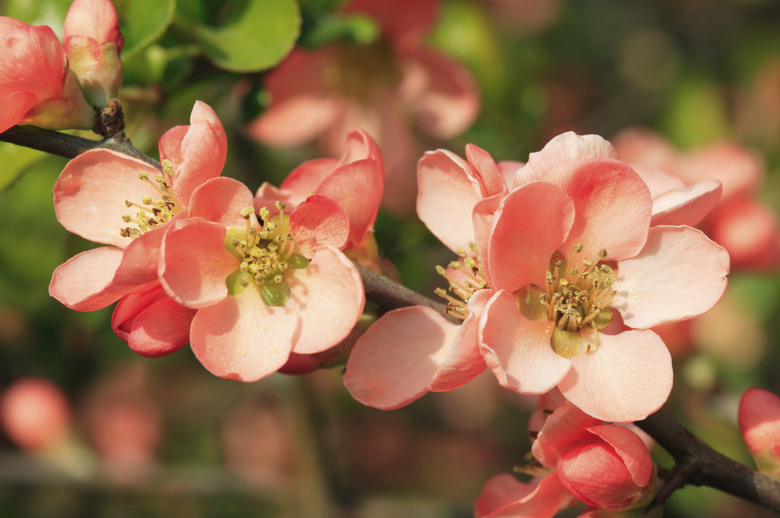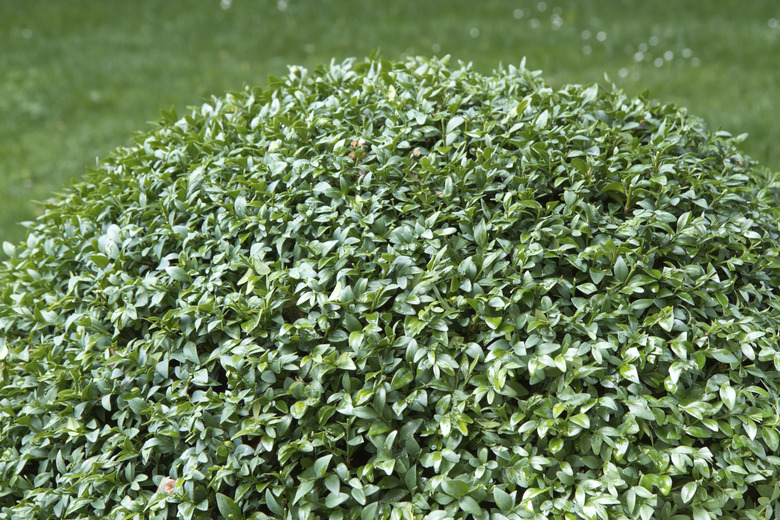Shrubs That Make A Good Fence
When choosing shrubs to grow a living fence in or around your yard, it is important to consider what needs you would like a fence to fulfill. Formal hedges that are evergreen, tall and dense, and can be pruned into one solid mass might be preferred if privacy or a traditional look is desired. An informal hedge, made up of shrubs that do best without a lot of pruning, can bring color and wildlife into your yard while still creating a fence between property lines or areas within your own yard.
Step 1
Euonymus alatus "Fire Ball," or burning bush fire ball, is a compact, tight-branched shrub that is popular for its adaptability and brilliant red fall color. An informal hedge fence grown from fire ball requires little care and will provide you with a dramatic show in autumn. Because of its height, fire ball can also provide privacy or act as a windbreak when grown as a fence. Fire ball grows five to seven feet high and spreads three to five feet wide. It grows best in full sun and is recommended for U.S. Department of Agriculture (USDA) hardiness zones 4 to 8. Euonymus f. "Emerald Gaiety" is a low-growing shrub whose dense, erect habit is ideal for shorter, more formal hedges. Its leaves are deep green with a white edging that turns pink in the winter. Emerald gaiety grows two to four feet high and spreads three to four feet wide. Its shorter stature would work well as a living fence between property lines where privacy is not an issue. It blooms small, easily overlooked flowers in the spring, but produces striking red berries in the fall. It grows best in full to partial sun and is recommended for USDA zones 5 to 9.
Step 2
Step 3
- Euonymus alatus "Fire Ball," or burning bush fire ball, is a compact, tight-branched shrub that is popular for its adaptability and brilliant red fall color.
- Euonymus f. "Emerald Gaiety" is a low-growing shrub whose dense, erect habit is ideal for shorter, more formal hedges.
Privet
Step 1
Ligustrum vulgare "Cheyenne" is the hardiest of the privet species. It is useful as a formal hedge plant because it grows quickly and can be kept pruned to maintain a fence as short as 18 inches or be allowed to grow to its natural height of around seven feet. At its natural height, Cheyenne provides seasonal privacy and protection from wind; it does lose its leaves in the fall. Cheyenne is widely adaptable to a variety of soils and moisture conditions. It grows best in full to partial sun. Cheyenne privet is recommended for USDA zones 4 to 8.
Step 2
Texas Scarlet
Step 1
Chaenomeles x "Texas Scarlet" is an excellent hedge shrub for attracting wildlife. It produces brilliant red flowers in early spring that can be used for indoor bouquets. Summer foliage is glossy green, and in the fall, Texas Scarlet produces apple-like fruits that are popular with many types of wildlife. Texas scarlet grows three to four feet high in a mounding shape. As an informal living fence, it would provide color, seasonal interest and life to your landscape. It requires full to partial sun and grows in USDA zones 5 to 8.
Step 2
- Ligustrum vulgare "Cheyenne" is the hardiest of the privet species.
- Summer foliage is glossy green, and in the fall, Texas Scarlet produces apple-like fruits that are popular with many types of wildlife.
Boxwood
Step 1
Buxus sempervirens, or Common Boxwood, is a classic choice for growing a formal hedge. It grows 15 to 20 feet high, so it can provide privacy and wind protection, yet it also responds well to severe pruning, so nearly any size or shape of fence can be sculpted from a row of common boxwood. It also makes a good choice for a privacy hedge because its glossy green leaves hold tight all through the year. Boxwood requires well-drained soil and full sun, and is recommended for USDA zones 5 to 8. Boxwood "Koreanes," Boxwood "Green Velvet" and Boxwood "Wintergreen littleleaf" are also good choices for growing a living hedge, formal or informal, if height is not a consideration. Each of these cultivars of boxwood grows only two to three feet high and works well for a short border fence between neighboring yards or public walkways.



